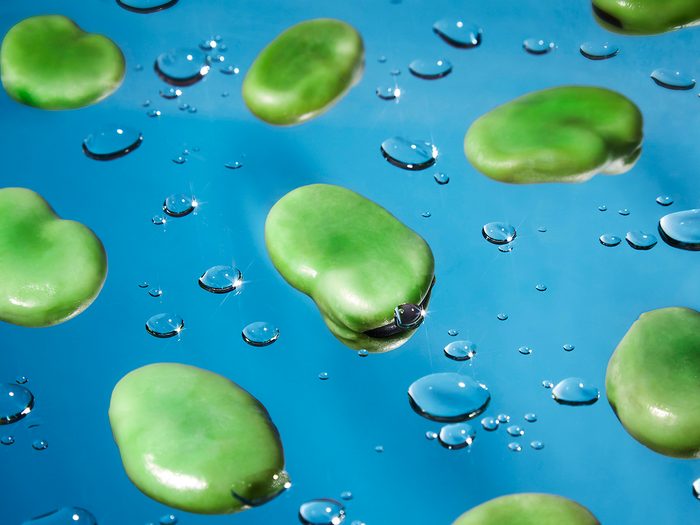Reasons to Eat Fava Beans This Spring

Welcome spring with one of the world’s oldest (and most delicious) legumes.
The beginning of spring feels like the scene in The Wizard of Oz when the picture turns from black and white to Technicolor—the colours are brighter and everything, including produce, seems more delicious. But the window for spring vegetables is brief, so make sure to add buttery fava beans to your list before they’re gone.
Fresh favas are only available from late March to early May. They’re the Russian nesting doll of the bean family: a bean, inside a bean, inside a bean. The large bright green legumes are encased in pale green skins, and between three and eight of them typically grow inside the leathery dark green pods. The beans also come in a purple variety.
One of the oldest domesticated pulses, fava beans have been a staple in Mediterranean and Middle Eastern diets for centuries. One of the reasons they’ve remained a dietary cornerstone is their high nutritional value. Fava beans are a good source of slower-digesting complex carbohydrates, protein and fibre, a nutritional trifecta that keeps you fuller longer. (They are often eaten before sunrise to help people fast more easily during Ramadan.) Fibre also feeds good gut bacteria, promotes regularity and keeps cholesterol levels in check.
Favas have an ideal fatty acid profile, characterized by a high content of monounsaturated (MUFAs) and polyunsaturated fatty acids (PUFAs). Choosing these fats improves the ratio of good, high-density lipoprotein (HDL) cholesterol to harmful, low-density lipoprotein (LDL) cholesterol, lowering your risk of heart disease and stroke. Another key nutrient is choline, which is needed to make acetylcholine, an important neurotransmitter for memory, mood and muscle control, among other brain and nervous system functions.
When picking out favas sold in their pod, look for bright green unblemished pods and avoid ones that appear dried out. Smaller beans are tastier, so pass on any beans that look huge or are bulging out of the pods (they’re more likely to be tough). Fava beans are best as fresh as possible, so store them in the fridge and eat within a week. You can also find bags of frozen favas year-round; they have been removed from their pod but have their outer casing and can be stored in the freezer for up to six months.
While fava beans take time to prep, they’re worth it. To remove the shells, blanch the beans for a minute or two and then shock them in ice water. This allows the shells to slide off while preserving the beans’ colour and crunch. Another hack is to place unshelled beans on a baking sheet and freeze for 30 minutes, after which the beans slip out of their shells. With frozen fava beans, simply defrost, then blanch and shell as you would with fresh beans.
The sweet, nutty flavour of fava beans pairs well with other springtime favourites like asparagus, spring onions and peas, and takes to bold flavours from fresh herbs like mint, basil and dill as well as aromatics like garlic, onions and chilies. Once shelled, favas can be used in dishes that call for fresh peas or beans—think pasta, risotto, salads and soups.
Try blending cooked beans into a healthy dip, creating a minestrone-style soup with other green vegetables, or tossing together a rustic panzanella with torn croutons, mint and a fresh cheese like feta or burrata. Smash cooked favas with olive oil, lemon, garlic and chili flakes and pile on bread for a fresh take on avocado toast. If keeping it straightforward is more your speed, sauté the shelled beans in olive oil or butter for an easy side dish. Whatever the dish, get shelling! You won’t want to miss your fava fix.
Laura Jeha is a registered dietitian, nutrition counsellor and recipe developer. Find out more at ahealthyappetite.ca.
Next, get the recipe for the perfect spring lunch: marinated fava beans and ricotta toast.




